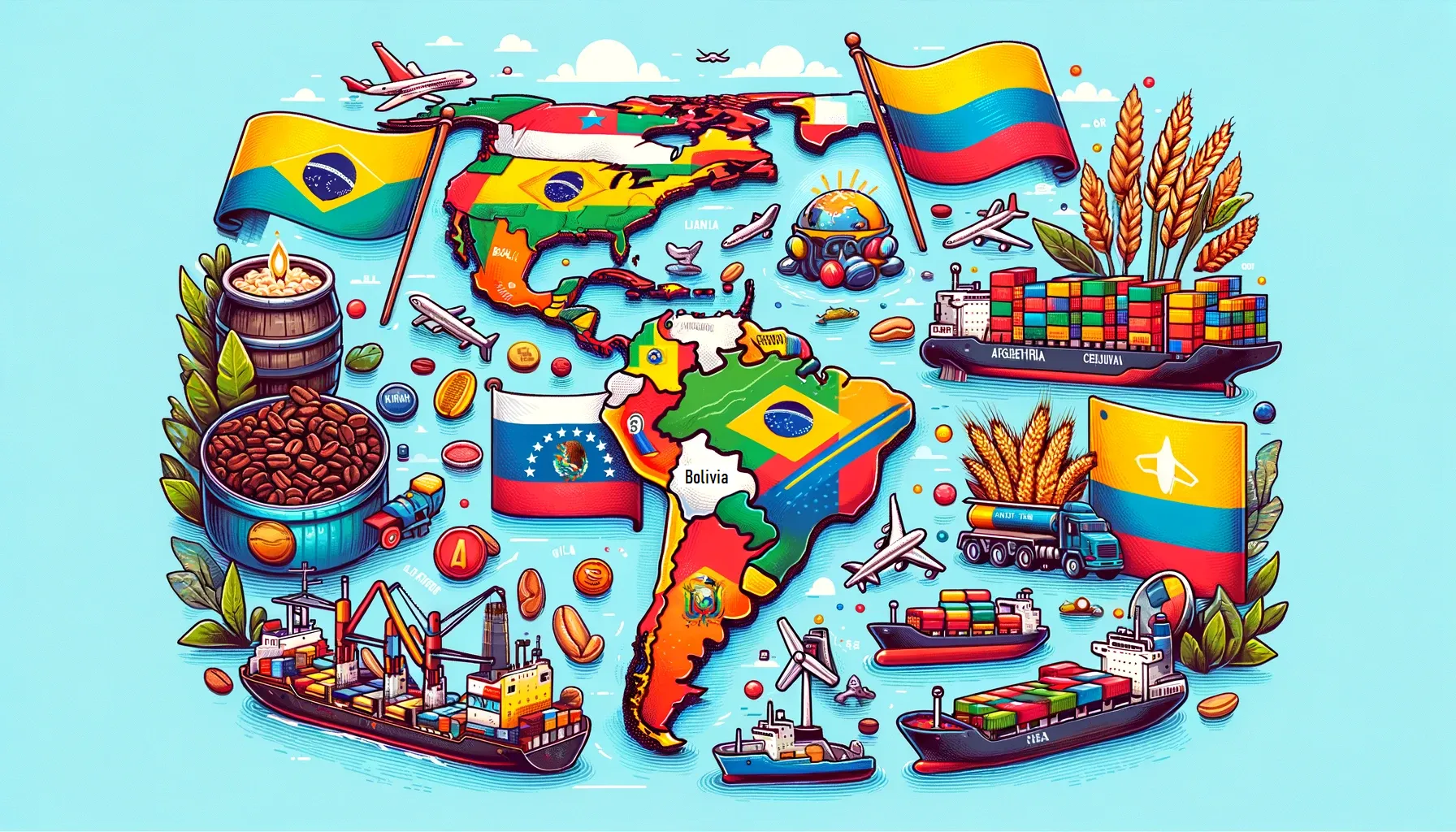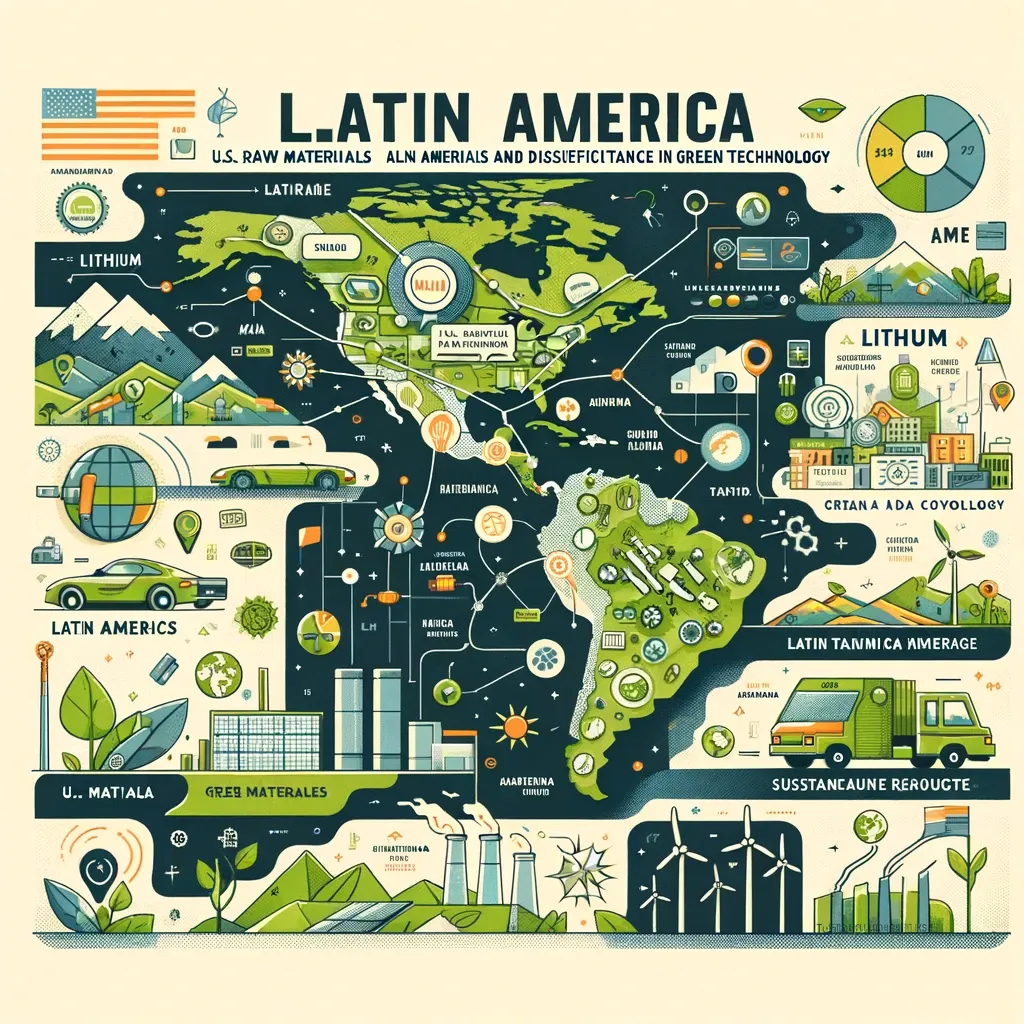Unlocking Opportunities: How U.S.-Latin America Trade Agreements Benefit SMEs
Explore the dynamic trade landscape between the US and Latin America. Discover how recent policy shifts and trade agreements are creating lucrative opportunities for SMEs on both sides, fostering cross-border business growth.

A conceptual representation of the Americas, highlighting vibrant trade routes between the U.S. and Latin American countries, with icons of SMEs symbolizing the diversity of businesses involved in these trade agreements.
Introduction
In today's global economy, Small and Medium Enterprises (SMEs) in the United States and Latin America stand to gain significantly from bilateral trade agreements. This post explores these agreements, detailing their nature, benefits, and the specific ways they support SMEs in navigating international markets.
United States-Mexico-Canada Agreement (USMCA)
- Overview: The USMCA, replacing NAFTA, involves the U.S., Canada, and Mexico. It includes modern elements suitable for today's economy, such as digital trade and improved intellectual property protections.
- Benefits for U.S. SMEs: Enhanced access to Mexican and Canadian markets, improved protections for U.S. intellectual property, and stronger digital trade provisions that benefit the growing e-commerce sector.
- Benefits for Latin American SMEs (especially Mexican): Better access to the U.S. and Canadian markets, opportunities in sectors like manufacturing and agriculture due to favorable terms, and increased investor confidence.
Dominican Republic-Central America Free Trade Agreement (CAFTA-DR)
- Overview: CAFTA-DR encompasses the U.S. and six countries: Costa Rica, El Salvador, Guatemala, Honduras, Nicaragua, and the Dominican Republic.
- Benefits for U.S. SMEs: Easier entry into Central American markets, reduced tariffs on a wide range of products and services, and stronger intellectual property rights protection.
- Benefits for Latin American SMEs: Access to the large U.S. market, opportunities for textile and apparel sectors under specific rules of origin, and enhanced foreign investment prospects.
Bilateral Trade Agreements with Chile, Colombia, Panama, and Peru
- Overview: These individual agreements focus on reducing trade barriers and enhancing business environments.
- Benefits for U.S. SMEs: Access to growing markets in these countries, improved conditions for services and investment, and reduced barriers in sectors like agriculture and manufacturing.
- Benefits for Latin American SMEs: Export opportunities to the U.S., especially for agricultural products, minerals, and fisheries, and increased investment from U.S. businesses.
Andean Trade Preference Act (ATPA)
- Overview: The ATPA allows duty-free access for certain goods from Andean countries, aiming to promote economic development.
- Benefits for U.S. SMEs: Access to diverse Andean products at competitive prices, fostering supply chain diversification.
- Benefits for Latin American SMEs: Duty-free access to the U.S. market for certain products, promoting sectors like textiles, apparel, and handicrafts.
United States-Brazil Trade Agreements
- Overview: While not a comprehensive free trade agreement, the U.S. and Brazil have agreements facilitating trade and investment.
- Benefits for U.S. SMEs: Improved trade relations with Brazil, opportunities in sectors like technology, energy, and agriculture, and a more predictable business environment.
- Benefits for Brazilian SMEs: Better access to U.S. technology and investment, increased opportunities for exporting agricultural and manufactured goods.
Caribbean Basin Initiative (CBI)
- Overview: The CBI provides Caribbean Basin countries with duty-free access to the U.S. market for most goods.
- Benefits for U.S. SMEs: Access to a variety of products from Caribbean Basin countries, fostering trade relations and diversity in sourcing.
- Benefits for Caribbean SMEs: Preferential access to the U.S. market, promoting industries like textiles, apparel, and agriculture.
Partnership for Growth
- Overview: This initiative, with countries like El Salvador, aims to promote economic growth and development.
- Benefits for U.S. SMEs: Improved business environments in partner countries can lead to more stable and predictable markets for U.S. businesses.
- Benefits for Latin American SMEs in partner countries: Enhanced economic stability and growth prospects, better access to U.S. markets and investment.

A diverse group of small business owners from the United States and Latin America engaged in trade discussions, with a backdrop of elements representing the USMCA
Did you know?
Did you know that U.S. Small and Medium Enterprises (SMEs) can leverage AI Marketing to maximize the benefits of U.S.-Latin America trade agreements? Here are some targeted, innovative ways they can do this:
- AI-Driven Analysis of Trade Agreement Impacts: U.S. SMEs can use AI to analyze how specific clauses in trade agreements affect various sectors. For instance, if a trade agreement with Chile lowers tariffs on agricultural machinery, AI can help U.S. agricultural equipment manufacturers tailor their marketing strategies to Chilean businesses, highlighting cost savings and enhanced access due to the agreement.
- Customized Market Entry Strategies: AI can assist U.S. SMEs in crafting market entry strategies for different LATAM countries based on the trade agreements in place. For example, AI analysis might reveal that a trade agreement with Mexico provides favorable conditions for renewable energy products. U.S. firms in this sector can then use AI to develop targeted marketing campaigns, focusing on how their products align with Mexico’s renewable energy goals and the benefits of the trade agreement.
- Localized Content Creation for Diverse Markets: AI tools can be used to create and adapt marketing content that resonates with the specific cultural and economic contexts of LATAM countries under various trade agreements. For example, a U.S. SME exporting consumer goods to Brazil can use AI to ensure their marketing materials are culturally relevant and take advantage of any reduced trade barriers or tariff reductions outlined in the agreement.
- B2B Networking and Partnership Development: AI-driven network analysis can identify potential business partners and key stakeholders in LATAM countries who are most likely to benefit from the trade agreements. U.S. SMEs can then create personalized B2B marketing campaigns, focusing on collaborative opportunities and mutual benefits under the trade agreements.
- Predictive Analytics for Emerging Opportunities: U.S. SMEs can use AI to predict future trends and market shifts in LATAM countries resulting from trade agreements. For example, if a new agreement is likely to boost the automotive sector in Argentina, U.S. auto parts manufacturers can anticipate this trend and increase marketing efforts in the region.
- Optimized Digital Marketing for E-commerce Platforms: Considering the rise of e-commerce in LATAM, AI can optimize U.S. SMEs’ digital marketing strategies to target consumers in countries where trade agreements have facilitated online sales. This could involve AI-driven SEO and content marketing strategies tailored to each country's specific consumer behavior and preferences.
Conclusion
The range of trade agreements between the U.S. and Latin America opens up a world of possibilities for SMEs. From market expansion to reduced operational costs, these agreements are pivotal in shaping the future of international trade for SMEs in these regions.




























